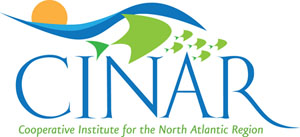This is the first online-only edition of the Gulf of Maine Times. Everyone concerned with the publication is grateful for the support shown to the Times by its faithful readers in these tough economic times.
We hope, with continued support, to be able to keep bringing you informative, interesting news and features about people, projects and issues that affect the Gulf of Maine. We will all miss the paper version of the Times, and perhaps someday it will return.
In this edition, the theme is the ocean, since a new national task force and the Copenhagen Climate Change Conference are calling attention to challenges that will affect the world’s seas and the Gulf – a sea within the sea.
You will find this year’s Visionaries—the people and organizations that help the Gulf maintain its health and vibrancy—as well as stories about historic visionaries and early fisheries, current concerns about how noise levels affect fish and the symbiosis of a tiny plankton and the biggest mammal in the sea.
Oceans are commanding more of the world’s attention than usual, as climate change researchers warn that damage from sea level rise could threaten many species and coastlines. President Obama appointed the Interagency Ocean Policy Task Force to determine how to best plan for the future of the sea and this panel’s interim report was published in October, with an emphasis on marine spatial planning to implement its goals. Anne Hayden writes about what’s going on with that management tool.
The Gulf of Maine has attracted the curious and the adventurous for centuries, and early scientific researchers had to be adventurers as well in order to discover what lies beneath the surface of the Gulf. Melissa Waterman gives us the fascinating history of Gulf research from Bigelow and Schroeder right up to today’s electronic techniques. She also introduces us to a fisherman, a previous Gulf visionary award winner, who talks about the changes he’s witnessed in Bay of Fundy fisheries over the years.
Carrie Schuman gives us another glimpse beneath the waters, to see the interaction between one of the largest and one of the smallest denizens of the deep. She also writes about how human-made noises disrupt the lives of ocean denizens.
Returning to the surface, reviewer Lee Bumsted reviews a book by an oceanographer who used floating debris to track and revise assumptions about ocean currents. She also reviews a book that details the fish species found near the coasts of Southern Maine and New Hampshire.
Borrowing from other publications, we are grateful to be able to bring our readers two stories: one provides information about the Atlas Project that’s mapping at-sea fishing communities. and the other details an experimental treatment for sea lice in salmon cages in New Brunswick. Readers will also find many links to electronic resources that provide additional information on the topics.
We hope you enjoy this edition of the Times, and that you will subscribe electronically and encourage your friends to do the same.
Print


















